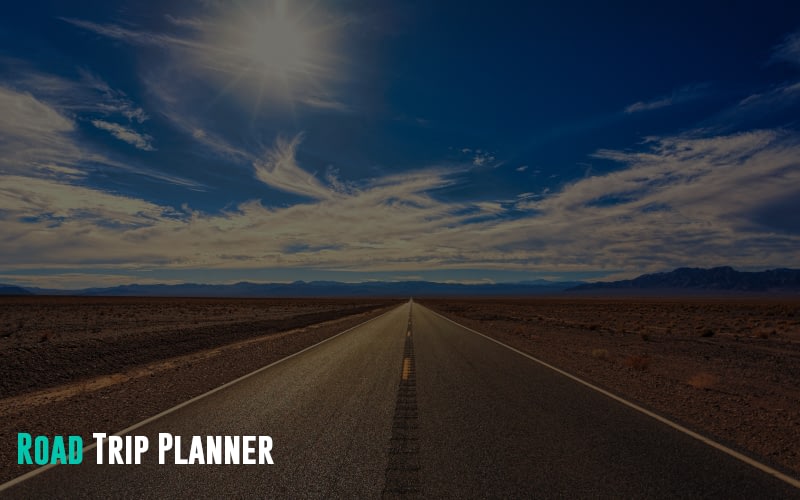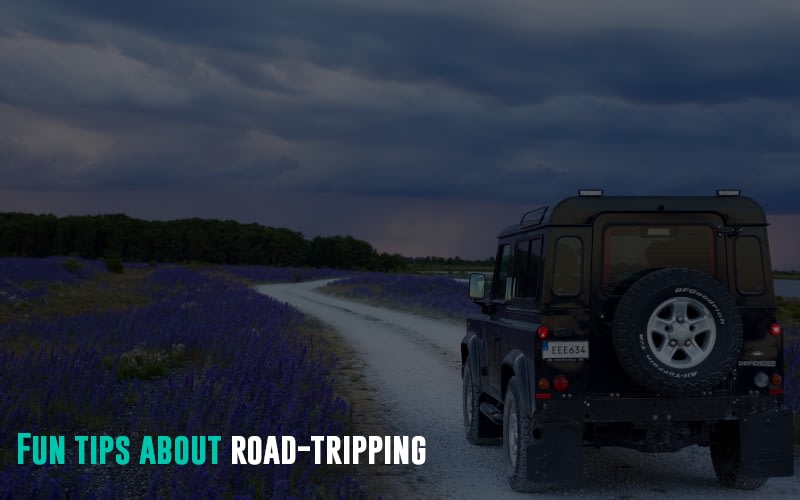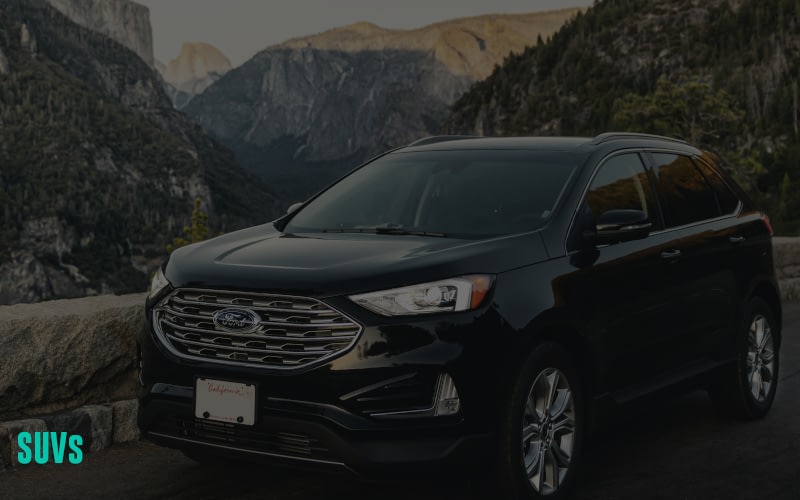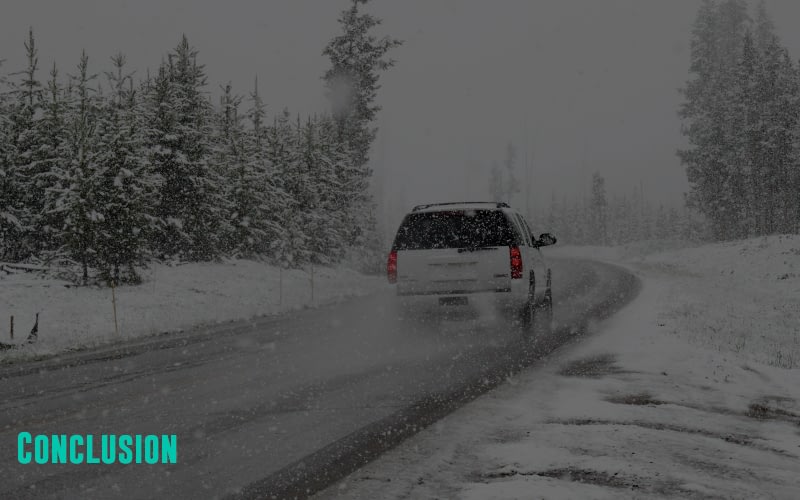Going on a road trip is one way to chase that ultimate freedom and spirit of spontaneity. Whether you’re chasing the horizon on a cross-country journey or going on a weekend escape, road trips can always offer you the best vacation of a lifetime. But planning a road trip is more than just selecting a destination and hopping into your vehicle. In this comprehensive road trip planner guide, we will look into the different steps, tips, and tricks to plan the perfect road trip.
Featured Image Source
How to plan a road trip?
Planning plays a major part in the success of your road trip. Though spur-of-the-moment road-tripping does sound adventurous, it may not be very practical or safe. Without proper planning, you also risk wasting time and gas and missing important events. So, we have made you a short checklist on the question, “What is the best way to plan a road trip?”
- Choose your starting point and ultimate destination, and consider the route you want to take and the places you wish to see along the way.
- Set a budget based on how much you can afford to spend on your road trip. You should account for fuel, accommodation, food, and any activities.
- Plan your route using mapping tools or navigation apps to outline your route and mark potential stops, attractions, and points of interest.
- Research and book your overnight stays at hotels. You can also camp or opt for alternative options like Airbnb.
- Pack well before the trip day and prepare a checklist of essentials, including clothing, toiletries, snacks, drinks, first-aid supplies, and any specific gear for your activities.
- Ensure your vehicle is in good working condition. Perform a safety check, top up fluids, check tire pressure, and carry essential tools.
- Bring your favorite road trip playlists, audiobooks, games, and any other entertainment for the journey.
- Ensure you have your driver’s license, vehicle registration, and any required travel documents.
Fun tips about road-tripping
Road trips are one of the best ways to experience a place you are dying to see. If you are a road trip planner, there are some fun tips you should consider. These include the following:
How long can you spend on a road trip?
Time is a deciding factor in all your road trips. So, when choosing the destination, ensure you have enough time. Sufficient time in your road trip itinerary will help you in case of unforeseen accidents. Also, try not to overplan or rush with your preparations. This can take the fun away from the whole process.
What is a reasonable average and maximum you should consider for driving in a day?
Knowing how long you can drive comfortably is important in a road trip, especially if you don’t travel frequently in your daily life. A reasonable average is about 300–400 miles a day. The maximum you should consider depends on your comfort and safety limits. You can try practice runs to test your limits and prepare for the trip. However, it’s better not to drive more than 500 miles daily.
How often should you stop?
Driving long distances can be monotonous, even when you love the road. Experts usually advise people to drive for eight hours and then take a break for two or three hours. But this is no hard and fast rule. Find a balance that works best for you. Just make sure you are not tiring yourself too much.
What are the most dangerous things to watch out for on a road trip?
Road tripping is not all unicorns and rainbows. You must watch out for things like fatigue and adverse weather while on the road. Also, try to avoid distractions like texting, eating, or fiddling with the radio while driving to prevent accidents.
High-level planning and visualization
A good amount of planning and visualization is necessary for a successful road trip planner. The hubs and spokes strategy is an excellent high-level planning process you can use when doing road trip planning.
In this strategy, you can think of your road trip as a wheel, with hubs representing major destinations and spokes as the places you want to visit in between. Using this method, you can identify the places you want to visit the most in and around your destination and map out efficient routes to avoid backtracking. Find clusters of locations you can visit together and trim the plan if places are too far out of the way.
Always be open to adjustments. If some hubs have fewer spokes, consider cutting them from your itinerary to make your route more efficient. If the place interests you, you can always make spur-of-the-moment stops when going from one hub to another.
It is also important to get proper rest when you are road-tripping. When traveling long distances between hubs, consider booking hotels along the way. This will prevent exhaustion, and you will get a comfortable night’s rest, making you fresh as a daisy for the next day.
Travel-Wise to help you plan and visualize the trip
You can make your high-level planning easier using free road trip planner software like Travel-Wise. This platform offers numerous itinerary templates to create and modify your itinerary easily. It has an AI-powered solution that helps you find related itineraries, optimize the order, discover estimated costs, and see travel time. You can include the place in your itinerary map for each event or trip plan. The map tool allows you to visualize your road trip quickly. It is also easy to add, remove, and move days and events quickly using this tool.
Choosing the right overnight stays
Picking a place to rest and sleep during your road trip is an important part of planning. Overnight driving is not practical and safe, especially if you are planning a multi-day trip. It usually won’t be an issue if you are going to a single destination and know where you are going. It is harder to plan if your schedule is flexible and lacks exact rest stops.
Some people avoid pre-booking hotels or similar accommodations while road-tripping due to the pressure to arrive on time. Many also want to explore activities they may find while on the road and arrive at rest spots in their own time. But trying to wing it is risky as campgrounds and even hotels can get crowded during busy seasons. You may even sleep in your car if you slack off booking accommodations on time.
When looking for a place to stay overnight, look for places that are within your budget and near the places you plan to visit. Always check for reviews and amenities before booking the place. Also, don’t forget to check for discounts and deals. Many hotels offer special rates for extended stays, early bookings, or loyalty programs.
Budget and time constraints
Budgeting, both money and time, is another part of road trip planning. After you decide on your hubs and the places you want to visit around these hubs, you can calculate the distance and fuel costs of your vehicle and the travel days. Try to be realistic about the mileage, and do not drive too long to cram in everything in one day. You can also easily calculate the accommodation costs once you have decided where to stay overnight.
Have a baseline for your budget and if you find yourself over budget or short on time, be prepared to adjust your plan by eliminating some hubs or adjusting your route.
Preparing your vehicle
Your vehicle is the most essential part of your road trip. A well-prepared car means a trouble-free vacation for you. The first step is to ensure that your vehicle is suitable for your planned trip.
The high gas cost is one factor many people consider when choosing. If you have an SUV that requires much fuel, renting a smaller, more fuel-efficient car might be better for your wallet.
You should also choose your vehicle depending on your destination, the number of people on the trip, any equipment you may need during the trip, and your luggage.
Different types of vehicles you can consider for your road trip include the following:
Cars
A car is the most common choice for a road trip, as most of you might already own one. They are typically more fuel-efficient than larger vehicles, making them cost-effective for long trips. They are also easy to navigate through narrow roads and tight parking spaces, giving you more travel flexibility. Many cars offer a smooth and comfortable ride, so it will be the perfect vehicle for covering long distances.
But cars have limited interior space and seating capacity. So, if you are traveling as a large group or are going for an extended trip and has a lot of luggage, cars may not be suitable for you.
SUVs (Sport Utility Vehicles)
SUVs are perfect for off-road travel and ice or snow-covered terrain. They have more cargo space and seating capacity than cars, making them suitable for families or groups of friends. Many SUVs can also tow trailers or tiny campers, so you can easily camp on your road trip.
But SUVs tend to have higher fuel consumption compared to cars, so if you are on a shoestring budget, these may not be the best option for you. Their larger size can also make driving challenging in crowded urban areas or when parking.
Vans
Vans are perfect for extended road trips as they have decent space for passengers and gear. Some vans are customizable, so you add features like sleeping areas, kitchens, and storage, making it a home on wheels. The interior of a van can also be quite comfortable, giving you room to stretch out during long drives.
One disadvantage of vans is their lower fuel efficiency compared to cars or SUVs, which can affect your budget. Similarly, maneuvering a large van can be challenging, especially in tight spots.
RVs (Recreational Vehicles)
RVs are your best bet if you want to camp during the road trip. It has a lot of amenities in it, like kitchens, bathrooms, and sleeping areas. They are also suitable for families with children. But RVs can be expensive and challenging to handle, particularly for inexperienced drivers. They are also not suitable for crowded city driving. Some national parks and scenic areas restrict RV size and amenities, so do your research before you buy an RV.
Choosing the perfect vehicle is not enough for a road trip to be successful. There are certain other things that you should consider when being a road trip planner. These include the following:
- Sign up for valuable services, such as AAA, that can be lifesavers in case of breakdowns or other emergencies.
- You should learn basic car maintenance skills such as checking tire air pressure, changing a tire, and conducting essential car safety inspections. Before starting your trip, you should also check your vehicle thoroughly with a mechanic.
- Pack helpful equipment for the car trip, like a roadside emergency kit. This kit typically includes:
- Jumper Cables: For jump-starting a dead battery.
- Tire Repair Tools: A tire jack, lug wrench, and a spare tire for changing a flat.
- Flashlight and Batteries: For nighttime emergencies.
- First-Aid Supplies: Bandages, antiseptic wipes, and basic medical supplies.
- Reflective Triangles or Flares: To alert other drivers in case of a breakdown. Always buy good-quality components when assembling your emergency kit to avoid malfunction at inopportune moments.
Conclusion
Road trips are a great way to free your mind and escape from monotonous daily life. A great road trip will help you explore some beautiful places and create memories for a lifetime. Using Trave-Wise, a free road trip planner, you can prepare adequately, keep the trip within the budget, know more about traveling, and let the open road guide you.





